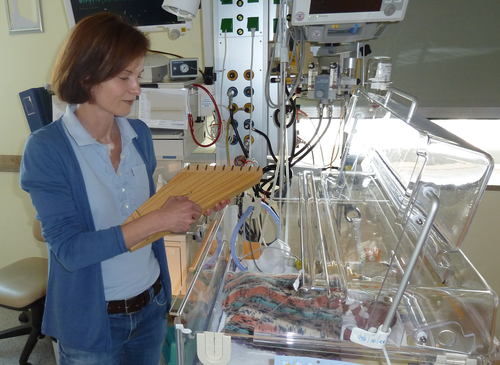Live music reduces stress levels in very low-birthweight infants
Abstract
Aim
Music might benefit preterm infants in stressful, intensive care environments. However, data on stress level indicators, determined by salivary cortisol levels, are scarce. We evaluated the effect of live harp music on the stress level indicators of preterm infants in a neonatal intensive care unit (NICU).
Methods
We exposed 20 stable preterm infants to music for 15 min on three consecutive days. Saliva was collected before the music was played and 25 min and 4 h after it ended. Salivary cortisol levels were measured by liquid chromatography–tandem mass spectrometry and vital signs, oxygen saturation, bradycardia, apnoeas and oxygen desaturations were recorded. Pain levels were assessed by the Bernese Pain Scale for Neonates.
Results
Salivary cortisol was significantly lower 25 min (18.9 nmol/L [3.9–35.6] p = 0.001) and 4 h after music (17.4 nmol/L [3.9–35.3] p = 0.003) than at baseline 4 h before exposure (19.5 nmol/L [7.2–51.1]). After music, the number of apnoeas and oxygen desaturations was significantly reduced on all three, days and the number of bradycardia episodes on day one. Pain scores significantly improved after music on all 3 days.
Conclusion
Exposure to live music reduced salivary cortisol and had beneficial effects on the physiologic parameters of stable preterm infants in a NICU.





